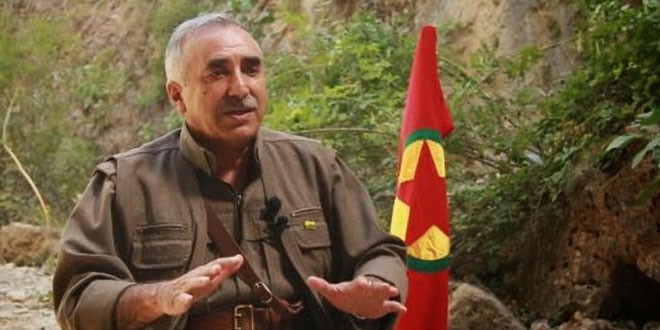Jamestown Foundation Conference:
Yemen after the Arab Spring: From Revolution to Disintegration?
Carnegie Endowment for International Peace
Washington, D.C
October 13, 2011
Bursting the Dam of Ma’rib: Regional Destabilization and the Collapse of the Yemeni State
Address by Andrew McGregor
Introduction
The Arab Spring is merely the beginning of what will probably be several decades of accelerated political, social and cultural growth in the Middle East. It will also be a time of heightened instability due to environmental and demographic changes that are fuelling demands for political change. Yemen is undoubtedly a prime example of a nation consumed by such changes.
 Ruins of the Great Dam of Ma’rib
Ruins of the Great Dam of Ma’rib
While acknowledging that there are many bright and energetic individuals working towards solutions for Yemen’s mounting problems, I think that a broad calculation of the rapidly deteriorating political, economic and environmental situation in Yemen can only result in a rather alarming assessment of Yemen as the center of a massive threat to long-term regional security in one of the most sensitive regions of the planet.
The Ma’rib Dam
While my paper has been assigned to the so-called “Water Panel” at today’s event, I actually intend to discuss the ancient Ma’rib Dam as a kind of metaphor for the impending collapse that threatens modern Yemen.
The Ma’rib Dam was one of the great engineering feats of antiquity. By the 9th century BCE this project had transformed large parts of Ma’rib into fertile gardens that observers often described as “a paradise.” With their food supply assured, the ancient Sabaeans were able to build a remarkable civilization in Yemen. However, by the first century of the Common Era, the dam began to break, with each breach destroying parts of the massive irrigation system and sending local tribes flooding out of the region. Successive attempts to repair the dam were made, but the final collapse in 542 triggered a major migration from this part of Yemen as the land returned to desert and the region suffered an economic collapse from which it never fully recovered. The catastrophe was even mentioned in the Qu’ran, where it was described as a divine punishment caused by the people of Ma’rib turning away from God. The mass migrations that followed the dam’s collapse permanently changed the political, social and cultural future of the rest of Arabia and even North Africa.
Challenges
Yemen is facing a similar catastrophe today – Oil, the mainstay of the economy and the source of three-quarters of the state budget, will run out in 2017. Water is quickly running out across the country, with the capital of Sana’a likely to run out first. The country is also experiencing a population explosion, with the population expected to triple by 2060. Civil wars and political instability make it extremely difficult to address any of these problems. A major catastrophe is coming in Yemen, one that will have a massive impact on regional security.
Before speaking of a Yemeni decline we must recognize that Yemen is already at the bottom of the heap in a number of important sectors, most notably being the poorest country in the Arab world, with the lowest GDP and few economic prospects. Current economic indicators are not good; inflation is racing ahead and the value of Yemen’s currency is declining rapidly. Public debt is on the rise while foreign currency reserves are shrinking. Yemen’s inability to suppress the Houthist rebellion in the north has been a major drain on the national treasury even before unrest began to spread through the rest of the country.
Yemen is already a net importer of food and is experiencing major increases in the cost of basic commodities. With fish stocks in massive decline and a major part of the agricultural sector and Yemen’s arable land devoted to the production of the drug qat, many Yemenis may soon find themselves unable to feed themselves. As qat is a far more lucrative crop that any food product, it is extremely hard to convince farmers to shift away from water-intensive qat production to something more useful. One consequence of the local population explosion will be an even greater demand for qat.
Current water demand is already well in excess of renewable resources, yet despite this qat production continues to consume something between 33 and 40% of water used for agriculture. Desalinization plants may be able to supply some of Yemen’s expanding water needs, but this option is enormously expensive, even prohibitive in the case of pumping desalinized water to the highlands. The Yemeni capital of Sana’a may run out of water at the same time the nation runs out of oil in 2017. The capital’s explosive population growth is rapidly making continued inhabitation untenable, but it is difficult to see how suggestions the capital might be moved from the arid highlands could be funded.
Perhaps most alarming is Yemen’s soaring population growth. From roughly 24 million people today, Yemen is expected to have a population of roughly 60 million by 2050, though it seems almost certain that some kind of internal collapse would occur before such a figure could be reached. Half the population is already under 15 years of age and will encounter few prospects as they come of age. Urbanization is placing further pressures on water supply and increases the number of people reliant on the state rather than their own resources.
Yemen currently has a 35 to 40% unemployment rate. A shrinking economy will soon be unable to provide employment for possibly a majority of Yemenis, a dangerous prospect. Unemployment also provides a large pool of disaffected young men for recruitment into various types of militant organizations.
Growing populations elsewhere and the impact of labor-saving technology will send remittances into further decline as demand for Yemen’s largely unskilled work force in the Gulf States will continue to shrink. Education and job training programs will have little chance of reversing this trend without the provision of basic nutrition to children and young people. UNICEF figures indicate almost half of Yemen’s children already suffer from chronic malnutrition, which can have a long-term impact on physical and mental health.
Yet despite these challenges, refugees continue to take their life in their hands to make the perilous trip from Somalia to Yemen. More will be coming – Somalia’s forests are not growing back and a continuing series of droughts and famines may represent the future of life in the Horn of Africa.
Yemen does have reserves of natural gas that could help replace some of the missing revenues from depleted oil industry, but Yemen’s ongoing political turmoil will delay full exploitation of these reserves, likely leaving a perilous gap between the expiry of the oil industry and the natural gas industry coming online.
The Separatist Option
As in Somalia, where tiny new “statelets” keep emerging as a means of coping with a collapsing state, separatism might present itself as an option for Yemen’s various tribal confederations or geographic groups. The idea is to minimize the scope of overwhelming problems by making them smaller and seemingly easier to deal with, or by cutting off less prosperous areas to preserve more viable regions. However, these type of policies would likely invite an interminable war for dwindling resources. Some parts of the country are already effectively self-ruled, such as the largely tribal east and the Houthist north, where the writ of the Sana’a regime has largely evaporated.
Can Yemen survive as a series of statelets, some viable, some not? The biggest challenge facing such statelets is that it will likely prove impossible for these regions to repel the natural gravitation of people to areas with food, water and at least the possibility of employment.
Creating smaller mini-states may sound appealing in theory but in practice these mini-states would be unsustainable. The old city-states of Europe were based on economic prosperity created by trade and manufacturing. The mini-states of Yemen will have little to trade and manufacture nothing. Yemen’s problems also need to be faced with a united front if any progress is to be made. Unlike Somalia, which had only the briefest experience with a unified national government, Yemen has traditions of centralized government going back for thousands of years. This will prove a strong counter-trend to the initial wave of separatism, but its success will depend on the ability of Yemen’s government to act in such a way that it will persuade at least some of Yemen’s many factions that a central or even federalist government is the solution. A unified Yemen will also undoubtedly receive the support of many of Yemen’s tribal and political power-brokers who have benefited from this system in the past. However, if the state is seen as incapable of furthering their own agendas, these power-brokers may begin to seek other options.
 Security Implications
Security Implications
In the struggle for power in the coming post-Saleh era, counter-terrorism will inevitably be a low priority in Yemen. Already we have seen Yemen’s elite counter-terrorism units, trained by the U.S. at great expense, pulled from their duties to provide personal security for the president. Like Saleh, many local leaders will see al-Qaeda as a useful tool to use against their enemies, possibly leading to further incidents such as the withdrawal of Yemeni troops from Zinjibar without opposition to its takeover by al-Qaeda allied militants. The targeting of pipelines and other oil facilities by al-Qaeda and various tribal groups is a continual threat to government revenues and discourages foreign investment.
Declining oil production has also reduced the state’s ability to cover military and security costs and salaries, a problem exacerbated by the vast numbers of so-called “ghost soldiers” in the military, a tradition inherited from the Ottoman administration. Ghost soldiers exist only on paper, allowing corrupt officers to draw salaries, clothing, supplies and arms from the government and then resell such provisions on the open market.
Al-Qaeda in the Arabian Peninsula will almost certainly attempt to exploit growing dissatisfaction with a government that finds itself unable to provide for the peoples’ needs. The question is how will a highly armed population react to life-threatening shortages? Again following the Somali example, it is possible that some Yemenis might turn to piracy in the strategically important waters just beyond the Red Sea and the Suez Canal.
Given the enormous growth trend of Yemen’s population, we must also recognize that many areas that are viable now may not be in the relatively near future under the pressures of their own unsustainable populations, never mind the arrival of refugees from other parts of the country, or from similarly threatened states in the Horn of Africa.
It will be difficult to isolate a deteriorating Yemeni state from its neighbors. Controls along the border with Saudi Arabia are expanding, but conversely, efforts to keep a troubled Yemeni population within Yemen’s borders may be a bit like preventing steam from escaping a boiler; it works for a while, but eventually the boiler will explode with devastating consequences for all those around it.
The vast lands of Africa will almost certainly appeal to Yemenis desperate to flee their homeland, with Yemenis possibly arriving in waves much as their ancestors once did after the collapse of the Ma’rib Dam, helping change the face of East and North Africa. With nothing in the way of coastal defenses or a functioning immigration system, Somalia could easily provide an unregulated gateway for Yemenis, many of whom might seek to make their way north to the Mediterranean coast before arriving in the southern EU states, which are already experiencing enormous problems absorbing migrants from Africa. The number of Yemenis pouring out of a collapsing state could easily reach into the millions in a relatively short period of time, threatening the collapse of some weak states in the Horn of Africa region or the Arabian Peninsula. This kind of effect could quickly threaten regional security and even international security a short time later should these events cause disruptions to energy supplies from the region.
Could larger numbers of Yemenis replace Asian foreign workers in the Gulf States? Of course, but this will only shift the problem elsewhere by increasing problems in the Asian states that currently rely on GCC remittances. More importantly, however, Yemen remains a target of resentment from the GCC states, which remember the Saleh regime’s decision to support Iraq in its invasion of Kuwait, a decision that was followed by the expulsion of 850,000 Yemenis from the Gulf States and the consequent loss of remittances from these Yemenis working abroad. A largely unskilled and often barely literate workforce is unfortunately of little use in the Gulf or elsewhere.
An International Effort to Save Yemen?
Unfortunately, Yemen’s present administration seems almost designed to thwart any efforts at relief, being consumed by levels of corruption that are among the highest in the world. In this environment, local capital seeks safer markets elsewhere and foreign investment is effectively deterred. Yemen’s political system is also based on extensive patronage networks, which raises the question of what happens when oil revenues begin to disappear. Will scarce government funds continue to go to patronage in the interests of self-preservation at the expense of much-needed development projects? Will international aid be similarly redirected? We must also take into account that implementing the reforms that could save Yemen or even slow its precipitous descent will almost inevitably be opposed by stakeholders who will see a threat to their position in such reforms.
Given the economic decline that can be expected as the oil fields dry up, it is plain that no Yemeni state will have the resources to deal with these overwhelming problems. That leaves an international effort, and a large one at that.
Will the Saudis and other GCC states turn their substantial resources towards aiding their Yemeni brethren? So far there is little sign of this. Or will the GCC states turn their resources to a seemingly cheaper option, preventing the spill-out of Yemenis in their direction? Unfortunately, Yemen will have to compete with other nations in the region for aid, reforms and development. Egypt, for one, may soon face its own political, economic, demographic and environmental crises that will take priority over the resolution of Yemen’s problems, even in the Arab world.
Current international economic trends are not in Yemen’s favor. $2 trillion may be needed to right the European economy – there will be little left over for places such as Yemen. The United States may face similar pressures – even in a best-case scenario there is little prospect for the kind of rapid economic expansion that would enable the U.S. to fund massive rehabilitation projects in places like Yemen. Yemen’s pervasive corruption at all levels of government will also make massive international assistance a hard sell. Yemenis may also be asked to change their behavior in ways they might find unpalatable. As food pressures grow worldwide, how likely is it that international donors will step up to provide food to a nation producing families far larger than those found in their neighbors or that prioritizes the production of a recreational drug over food? In addition, international aid efforts are also likely to meet resistance from an insular Yemeni society that distrusts foreign intentions. Regional rivalries will inhibit the rapid creation of mechanisms designed to pull Yemen back from the brink.
Money alone will be unable to resolve the looming multiple crises in Yemen. Similar to post-hurricane Haiti, the infrastructure simply does not exist to absorb and make use of financial aid, even without the real threat of such aid disappearing into private hands.
Conclusion
To sum up, Yemen faces unsustainable population growth, unsustainable exploitation of resources, a system of government that is crumbling and a general lack of will to undertake necessary reforms. There are unfortunately few trends that would indicate Yemen will pull out of this downwards spiral. Desalinization plants and natural gas reserves may provide some temporary help, but perhaps only long enough to apply one or two more patches on the dam before it bursts. Yemen’s current political state gives little hope that it will soon be able to present the kind of united and determined front needed to confront these problems.
As resources shrink, Yemen’s well-armed tribes will increasingly come into conflict over water and pastures, creating an almost permanent state of instability that the government will be unable to resolve. The gradual dissolution of the national army is also placing heavy weapons into tribal hands.
Repeated attempts to patch up or repair the Dam of Ma’rib were not enough to prevent its collapse. Today there are enormous pressures on the Yemeni state that threaten its collapse, a disaster that will not be averted by half-measures. The social and political transformations that might help delay or prevent the collapse are unlikely to be achieved in the time left, leaving the possibility of a humanitarian crisis of unprecedented proportions with vital implications for regional and international security.



